How to Preserve Garlic: 6 Simple Methods That Actually Work
Learn how to preserve garlic with 6 easy methods: freezing, dehydrating, pickling, garlic vinegar, garlic salt, and garlic oil. Tips for safety, shelf life, and uses.
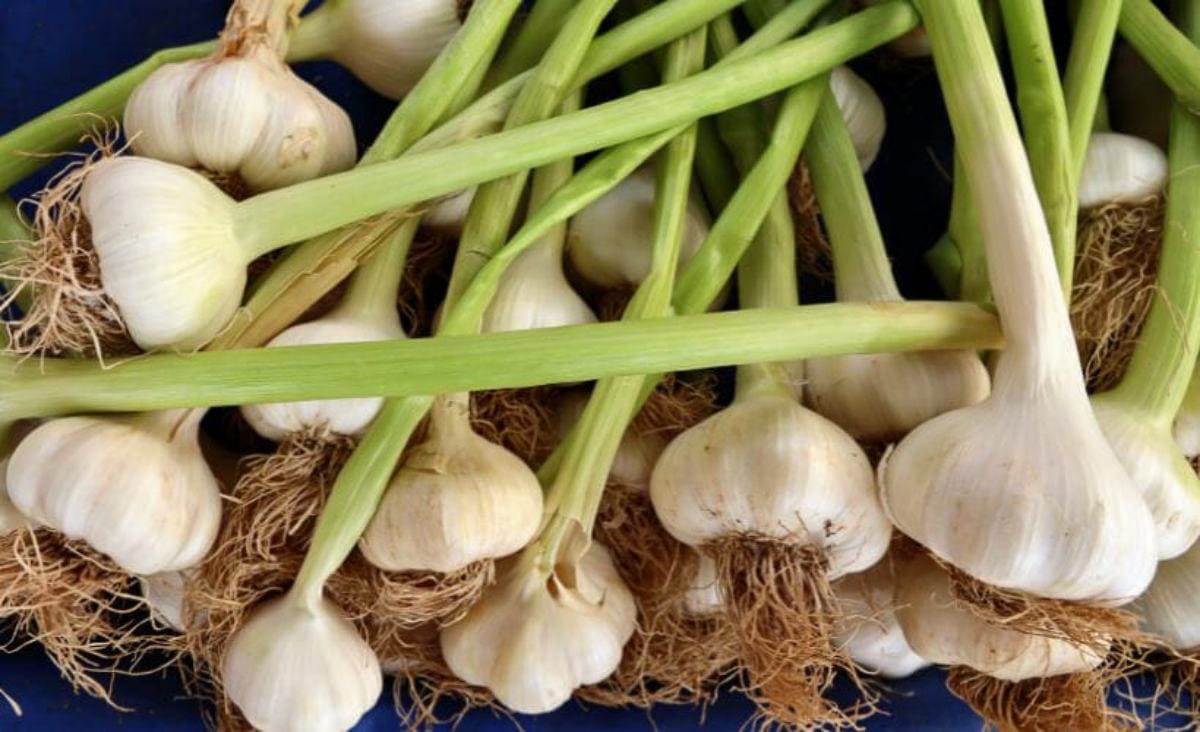
If you’ve ever grown your own garlic, you know the “problem” of abundance. When the bulbs all come in at once, you suddenly have more garlic than you could possibly use in a month. And while garlic lasts a good while on its own, it doesn’t last forever.
I’ll admit, the first year I grew garlic, I lost half my harvest because I didn’t cure it properly or store it well. Lesson learned. Now I use a mix of preserving methods to make sure not a single clove goes to waste.
I’ll walk you through six ways I’ve used to preserve garlic (freezing, dehydrating, pickling, making garlic vinegar, garlic salt, and garlic oil) along with a few lessons I learned the hard way. By the end, you’ll know which ones are actually worth the effort and how to keep garlic handy all year long.
Why Preserving Garlic Matters
Fresh garlic, when cured and stored properly, can last months on the shelf. But eventually, bulbs start to sprout or shrivel. Preserving garlic lets you hang onto that fresh flavor and keep using it for months, instead of watching it sprout on the counter.
It’s also a time-saver. I can’t tell you how many dinners I’ve pulled together faster because I had garlic already chopped, dried, or blended into salt. If you like big flavor without a lot of fuss, a couple of these will probably become your go-to’s.
If you’re growing your own supply, make sure you’re starting off on the right foot with how to plant garlic in the fall. A good harvest always begins with healthy, well-planted bulbs.
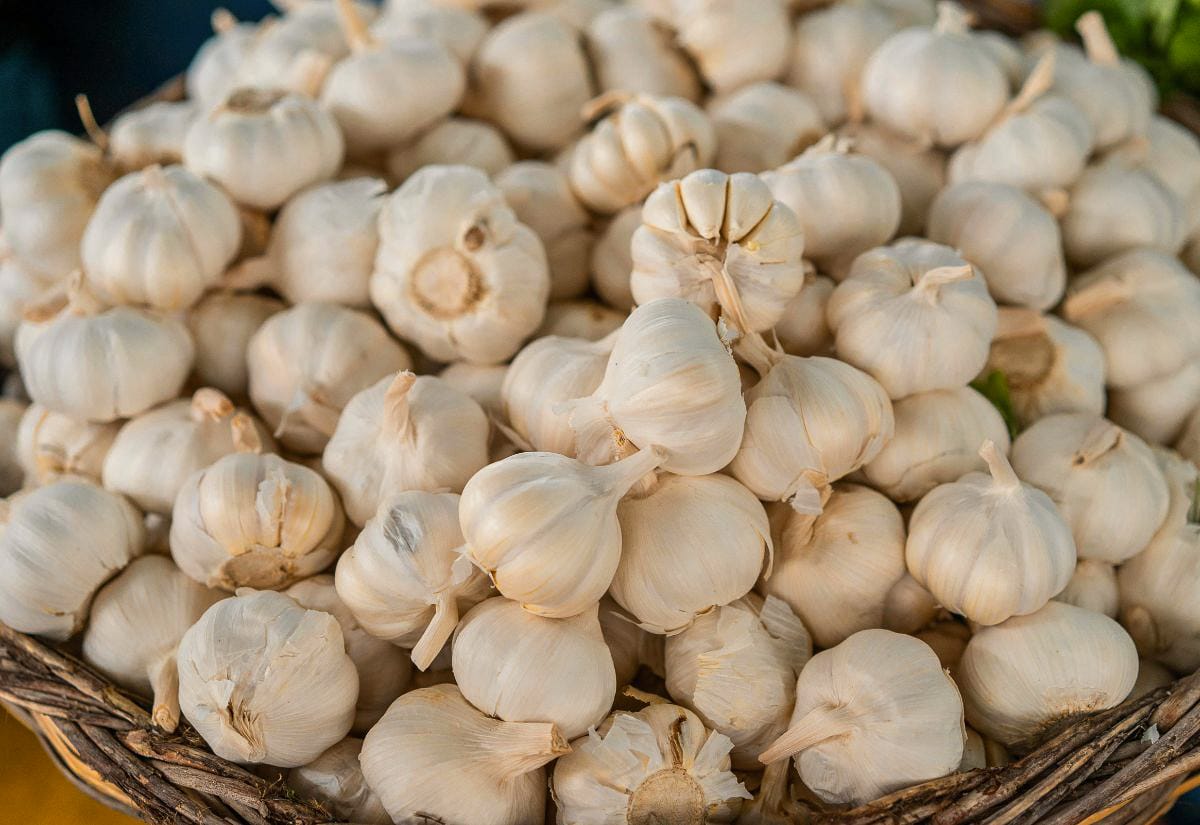
Picking the Right Method of Preservation
Not every method works for every kitchen (or every cook). Which one you pick really just depends on three things: how much time you’ve got, what tools you already have, and how you want to use the garlic later. If you’re short on time, freezing might be all you need. If you want a shelf-stable pantry staple, dehydrating is hard to beat. And if you’re after something a little fun (and snackable), pickling might become your go-to.
Freezing Garlic
Freezing is the fastest, least fussy way to preserve garlic. You can:
- Freeze whole peeled cloves in freezer bags.
- Toss unpeeled bulbs straight in the freezer.
- Chop garlic, wrap it in plastic, and break off pieces as needed.
- Puree garlic with oil (2 parts oil to 1 part garlic) and freeze in small containers.
Thawed garlic does get mushy (totally normal) but the flavor’s still there. I toss it into soups, sauces, or anything that doesn’t need crisp texture.
If you’re making garlic-oil puree, store it only in the freezer. Garlic mixed with oil can grow botulism if it isn’t frozen, so it’s just not worth messing around with.
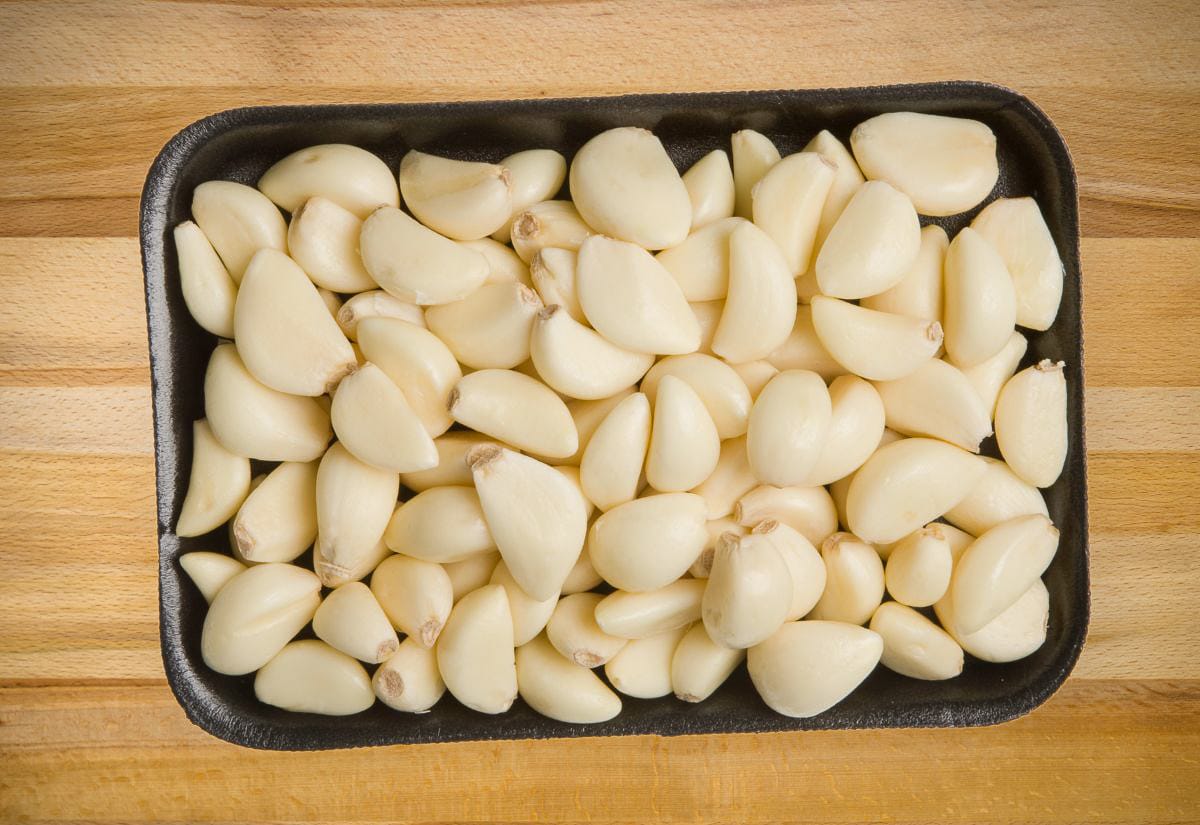
Dehydrating Garlic
This is my personal favorite. Dried garlic lasts for ages and can be used as chips or ground into powder. The first time I made my own garlic powder, I knew I’d never touch the store-bought stuff again. It’s that much better.
How to dehydrate garlic:
- Peel cloves, discarding any bruised ones.
- Slice in half lengthwise.
- Place in a dehydrator at 125–130°F until brittle.
No dehydrator? Use your oven at the lowest setting with the door cracked open. It takes longer, but it works.
Store dried garlic in airtight jars in a dark pantry. If it softens, re-dry before grinding.
Pickling Garlic
Around here, pickled garlic doesn’t usually make it into recipes. We eat it straight out of the jar. The bite softens and it turns into this tangy, almost sweet snack we can’t stop snacking on.
To make it:
- Fill a clean jar with peeled cloves.
- Cover with vinegar (red or white wine vinegar works well).
- Add salt (about 1 tbsp per cup of vinegar).
- Season with dried herbs like bay, oregano, or chili flakes.
Keep it in the fridge, submerged, and it’ll last months. We snack on these with crackers and cheese, but they’re also great tossed into salads or stir-fries.
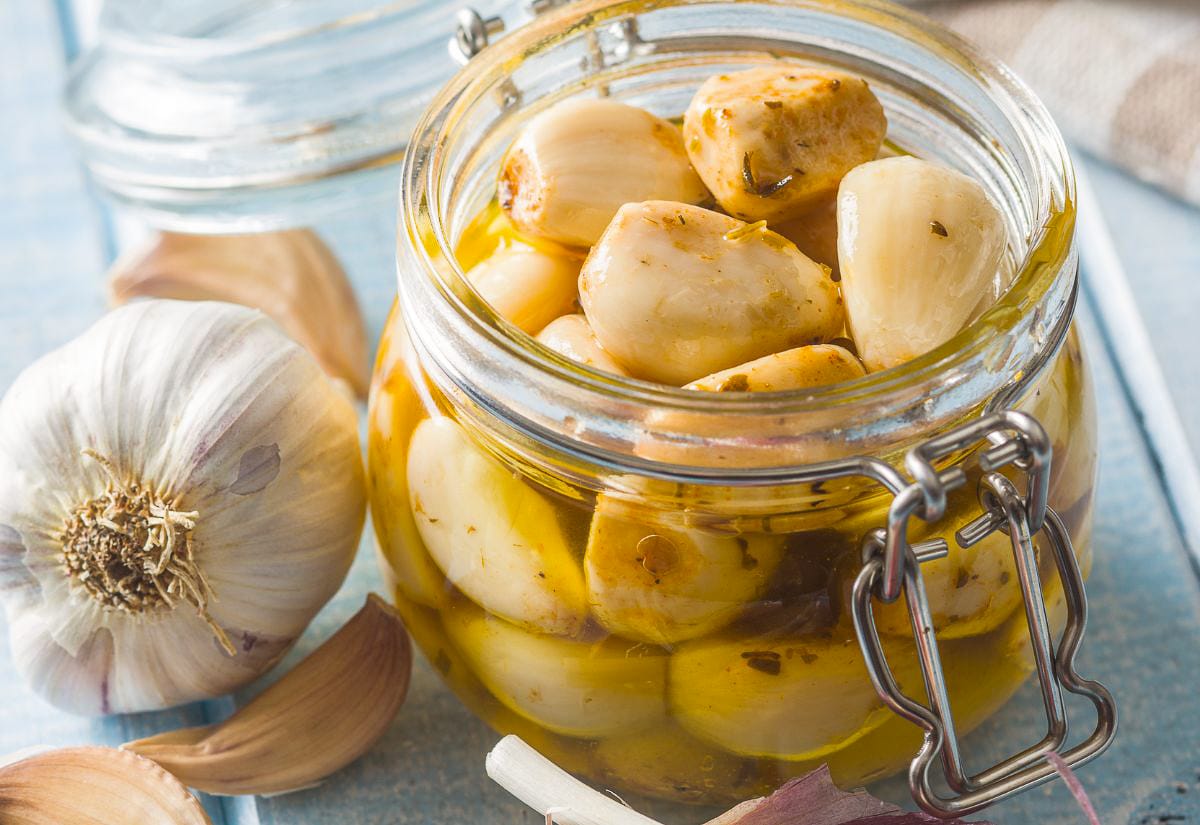
If you enjoy the tang of pickled garlic, you’ll probably love trying it with scapes too. Gina over at Running to the Kitchen has a fantastic pickled garlic scapes recipe that’s perfect when those curly stems show up in early summer.
Garlic Vinegar
Of all the infusions I’ve made, garlic vinegar is the easiest and the one I reach for most often.
- Drop whole or chopped cloves into red or white wine vinegar.
- Let it sit for 3–7 days in a cool, dark spot.
- Strain, refrigerate, and enjoy.
I like keeping mine in a swing-top bottle. It makes pouring and straining way easier.
Garlic vinegar shines in dressings and marinades. Mine rarely lasts four months, but if you notice mold or off smells, toss it and start fresh.
Garlic Salt
If you dehydrate garlic, garlic salt is the logical next step.
Blend one part garlic powder with four parts salt (or play with the ratio). A quick pulse in the blender combines them. Don’t overdo it or it’ll clump.
I keep mine in airtight spice jars with shaker lids so it’s easy to sprinkle garlic salt into recipes without it clumping. Garlic salt is one of those things that just makes everything taste better, from roasted veggies to homemade crackers. I use my homemade garlic salt most often on snacks like flax seed crackers made in the dehydrator. It’s one of those combinations that makes you forget store-bought even exists.
Garlic Oil
This is the one method where I really need to stress caution. Fresh garlic in oil at room temp can cause botulism, so it’s not worth the risk.
Safe options:
- Freeze peeled garlic submerged in oil.
- Make garlic-flavored oil by combining dried garlic with olive oil and refrigerating.
If the oil solidifies, just scoop it out with a dry spoon. Never use wet utensils, as moisture invites bacteria.
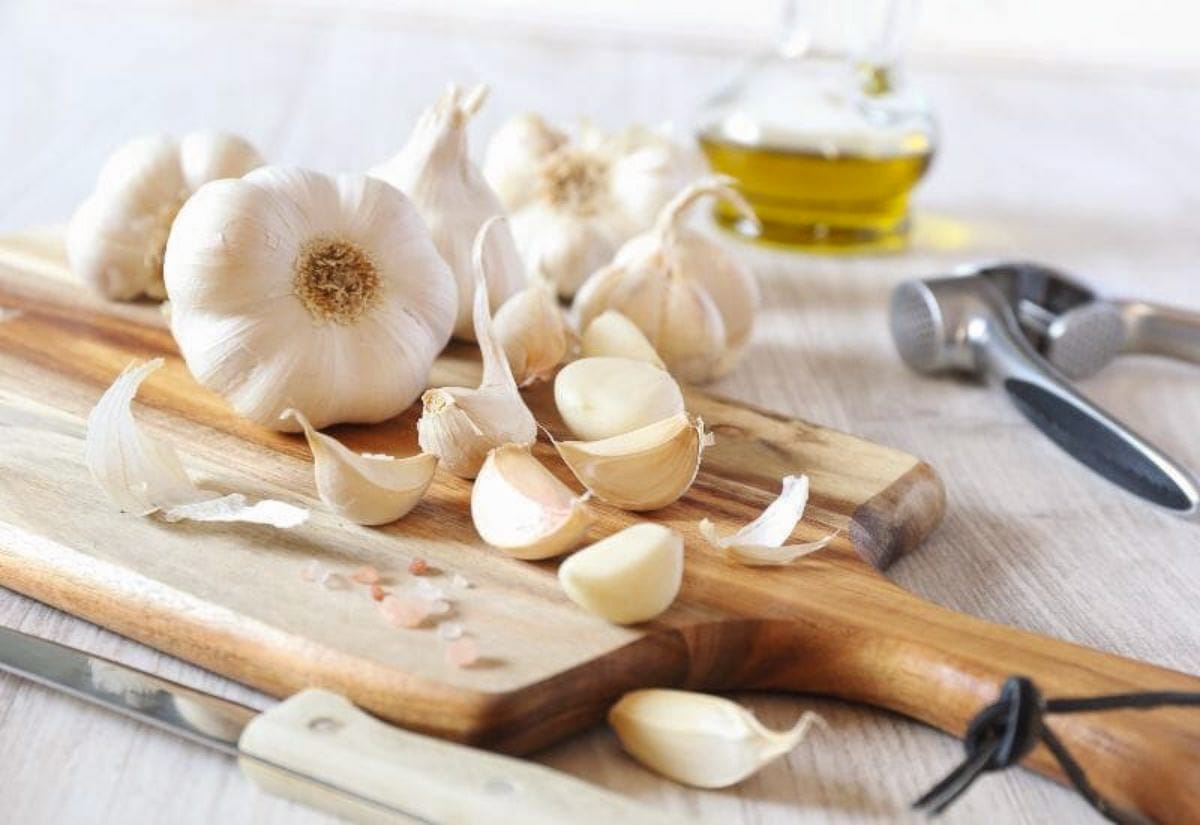
Which Method is Best?
By now you’ve seen the pros and cons of each technique, but it helps to compare them side by side. Since choosing the right method really comes down to shelf life, convenience, and how you’ll use the garlic later, this chart lays it all out side by side so you can quickly see which one makes the most sense for you.
| Method | Shelf Life | Best For | Watch Outs |
|---|---|---|---|
| Freezing | 6–12 months | Quick cooking use | Mushy texture |
| Dehydrating | 1+ years | Powder, long-term storage | Needs airtight jars |
| Pickling | 3–6 months (fridge) | Snacks, salads | Must stay submerged |
| Garlic Vinegar | 3–4 months (fridge) | Dressings, marinades | Discard if mold develops |
| Garlic Salt | 1+ years | Everyday seasoning | Avoid over-blending |
| Garlic Oil | Months (frozen) | Flavoring oil | Botulism risk if not frozen |
Garlic Storage Questions I Hear All the Time
Still have questions? You’re not alone. Here are a few of the most common things people ask (and what I’ve learned along the way).
Want to save these garlic preservation tips for later? Pin this guide so you’ll have it handy at harvest time.
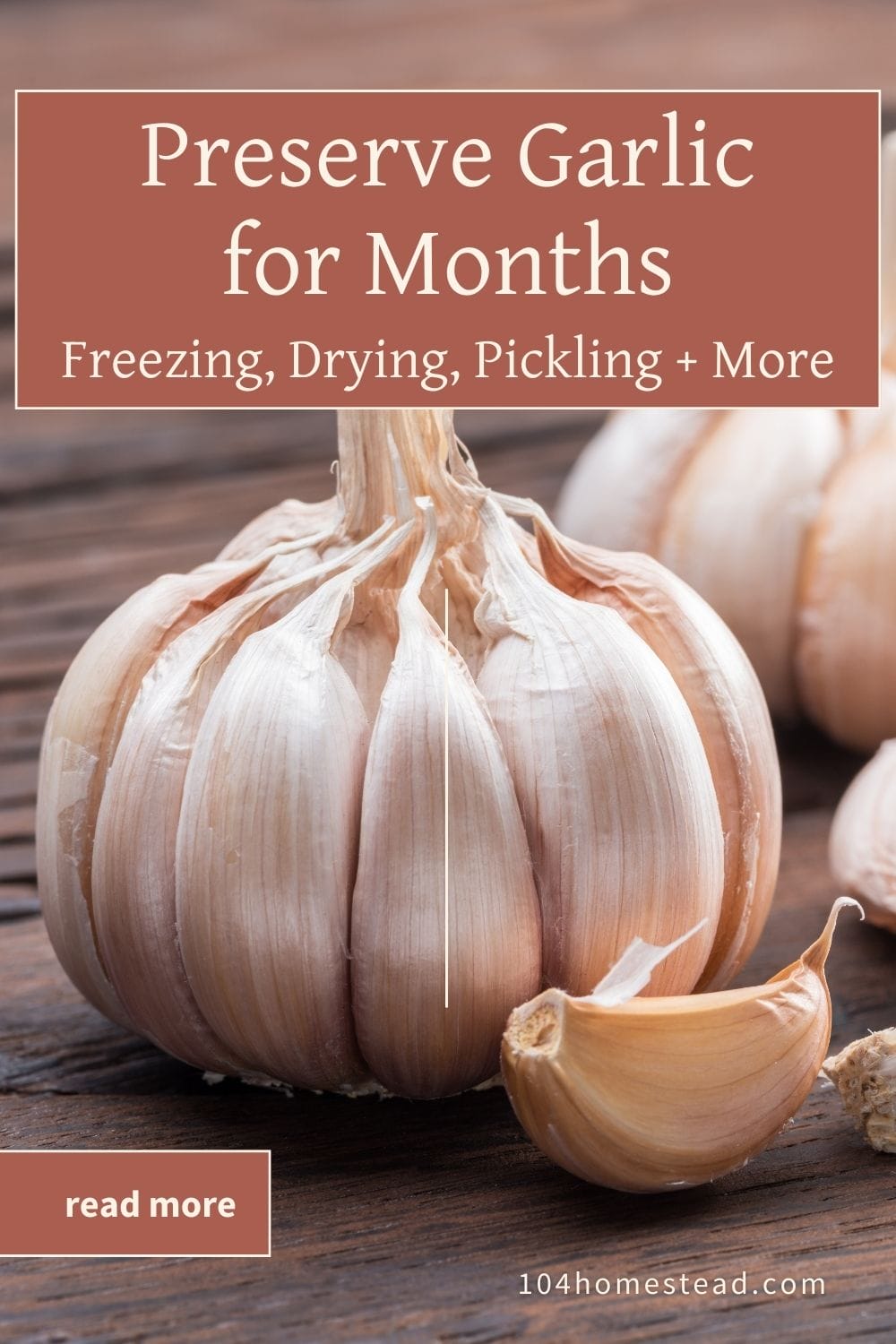
Preserving garlic isn’t just about preventing waste. It’s about having your favorite flavor ready at your fingertips. I use a mix of them, because they each come in handy in different ways. My pantry always has a jar of homemade garlic salt, my freezer has a stash of frozen puree, and there’s usually a jar of pickled garlic in the fridge.
Pick one or two methods and give them a shot. You’ll figure out quickly which ones earn a permanent spot in your routine. And if you’re in the mood to go beyond garlic, you might also like my guides on how to preserve hot peppers or storing cabbage for winter. They’re both easy ways to make the most of a bumper harvest.

Great information and ideas offered. Thanks